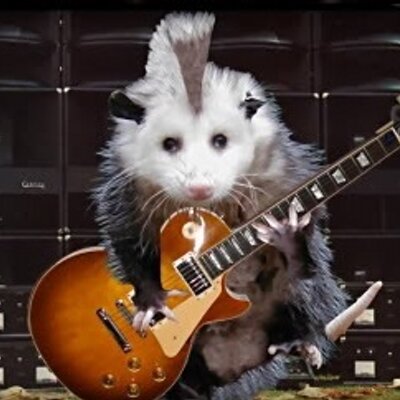

Opossum hair is long and silver to gray in color. Wear marks and hairs may be found around the edges of entry points where opossums are entering a building or crawling under a fence. I n developed areas, trails occur along buildings and fences. Like raccoons and foxes, opossums use culverts as a safe way to cross under highways and roadways. Opossums readily use trails made by other wildlife or humans near creeks, ravines, and wetlands. (Contrary to myth, opossums do not hang upside down by their tails when sleeping.) Trails
POSSUM HISS FULL
Their tails are able to wrap around and grasp tree limbs and can support the animal’s full weight for short periods.

Strong but not agile climbers, opossums can be observed climbing trees to escape, search for food, rest, or to look for dens. When idle, opossums constantly groom themselves, much as house cats do.Ī nighttime walk along a path bordering a stream or wetland, or down an alley lined with trashcans, will occasionally turn up an opossum searching for food. With a top speed of about 4 miles per hour, when “running,” opossums appear to be walking quickly, with the tail rotating in circles for balance. Opossums do not hibernate.Īlthough they can climb and are good swimmers, opossums prefer to amble about on the ground. Opossums are solitary animals, and except during breeding season or a female with her young, they are rarely seen together. At night, opossums forage in areas near their current dens, but can travel up to 2 miles in search of food. However, they can be seen at any time of day, especially in winter when food is scarce. Opossums are nocturnal, spending the day in dens or other protected spots. Mammals of the Pacific Northwest: A Pictorial Introduction Some of these animals, or their offspring, later escaped from captivity or were intentionally released. Virginia opossums, also known as “possums,” first arrived in Washington in the early 1900s as pets and novelties. During the 1900s, its range expanded northward and westward. Prior to European settlement of North America, the opossum was found only in Central America and the southeastern United States. Except for higher elevations, opossums now occupy most human-occupied habitats in western Washington. Opossums have adapted well to living close to people in urban and suburban environments. All other mammals are placentals, which means their young develop within a saclike membrane called the placenta inside the mother’s uterus, rather than in an exterior pouch. Opossums are the only marsupials in North America. Kangaroos, koalas, and wombats are other well known marsupials.

Opossums are marsupials (mammals with a pouch in which they carry their young), a primitive group of mammals found most commonly in Australia.


 0 kommentar(er)
0 kommentar(er)
